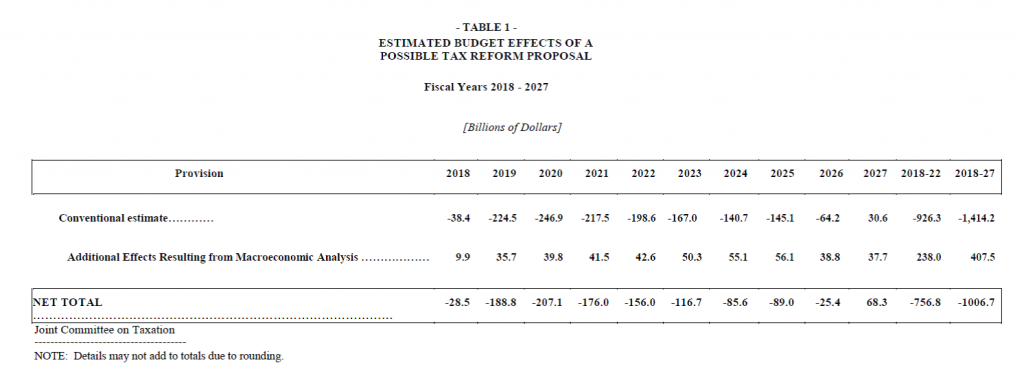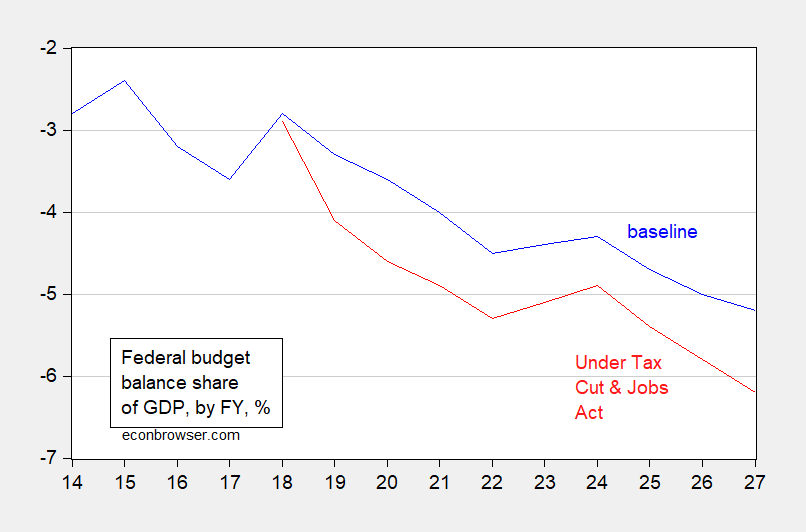And GDP is only averaging a paltry 0.8% above baseline level over 10 year period, given these massive, regressive tax cuts. Revenue effects:

Source: JCT (November 30, 2017).
And GDP is only averaging a paltry 0.8% above baseline level over 10 year period, given these massive, regressive tax cuts. Revenue effects:

Source: JCT (November 30, 2017).
My stint in the Executive Office of the President as a senior economist spanned the last months of the Clinton Administration and the first months of the G.W. Bush Administration. In the first months of 2001, we knew massive tax cuts were coming; we weren’t so sure that we’d be in a long term ground war on the Asian continent.
Continue reading
The Joint Committee on Taxation (JCT) has evaluated the distributional impact of the Senate’s plan. CBPP has graphically depicted the impact on households, adjusting the JCT figures to account for the provisions regarding estate taxes:
Source: CBPP.
Continue reading
And resulting impending cuts to Medicare.
Per CBO letter released yesterday.

Figure 1: Federal budget balance to GDP, by FY, baseline (blue), and under Tax Cut and Jobs Act (red). Source: CBO.
At the invitation of the Italian Presidency of the Group of Seven (G7) in 2017, the Istituto Affari Internazionali (IAI) conducted a research project on “Major Challenges for Global Macroeconomic Stability and the Role of the G7” together with a major policy think tank in each of the other G7 member countries:
Or, the GOP plan to eliminate the surplus population
How much does the U.S. government owe? The number that is subject to the recurrent debt-ceiling wrangling includes intra-government debts that the Treasury is imputed to owe to other Federal government operations. For example, Social Security taxes have historically exceeded benefits paid out. The surplus was used to pay for other government programs, and the Social Security Trust Fund was credited with corresponding holdings of U.S. Treasury securities representing the accumulated value of those surpluses. Many of us think of this as an I.O.U. that the government issued to itself. Economists usually subtract those intra-government debts when talking about the size of the federal debt, relying instead on the Treasury’s measure of debt held by the public. Although many of us have made use of the latter numbers in academic research, policy analysis, and lectures to our students, those data are also getting less reliable in recent years.
Continue reading
First, it was Newt Gingrich saying abolish the CBO. Now, Mick Mulvaney advocates ignoring the CBO.
Continue reading
That’s how Larry Summers described the growth forecasts underpinning the Trump budget released today. And I can’t really disagree, regarding the medium to longer term forecasts.
Continue reading